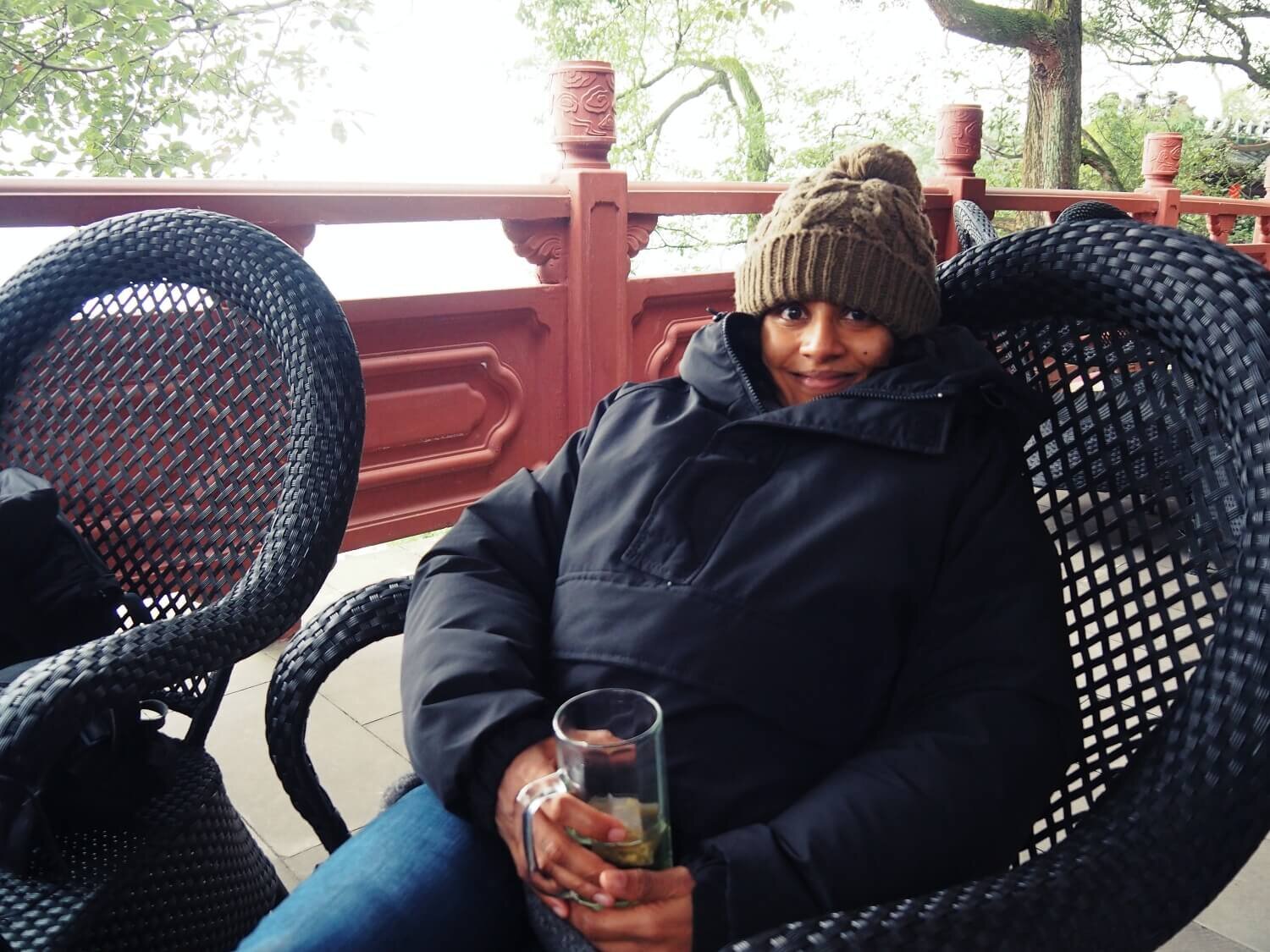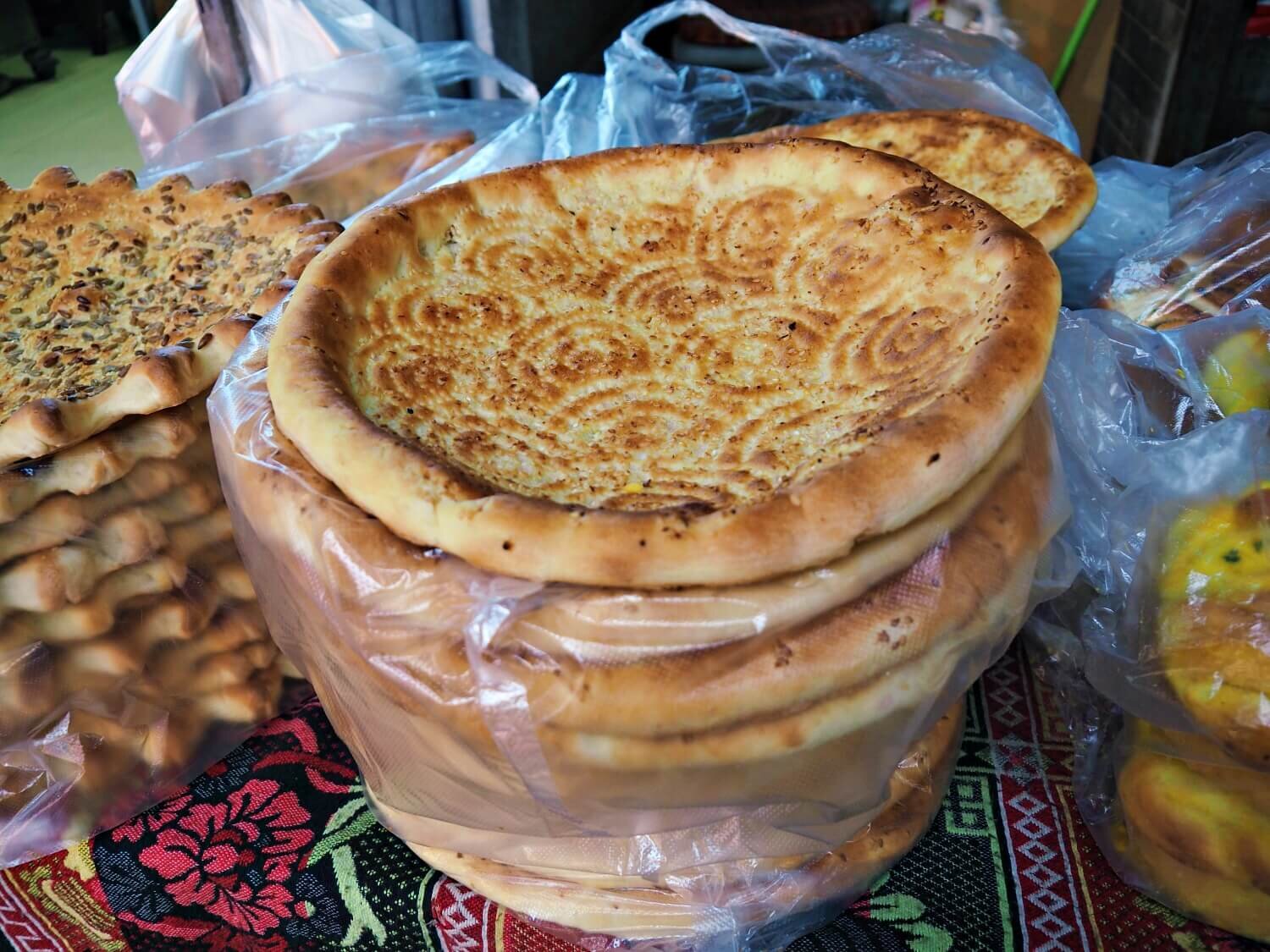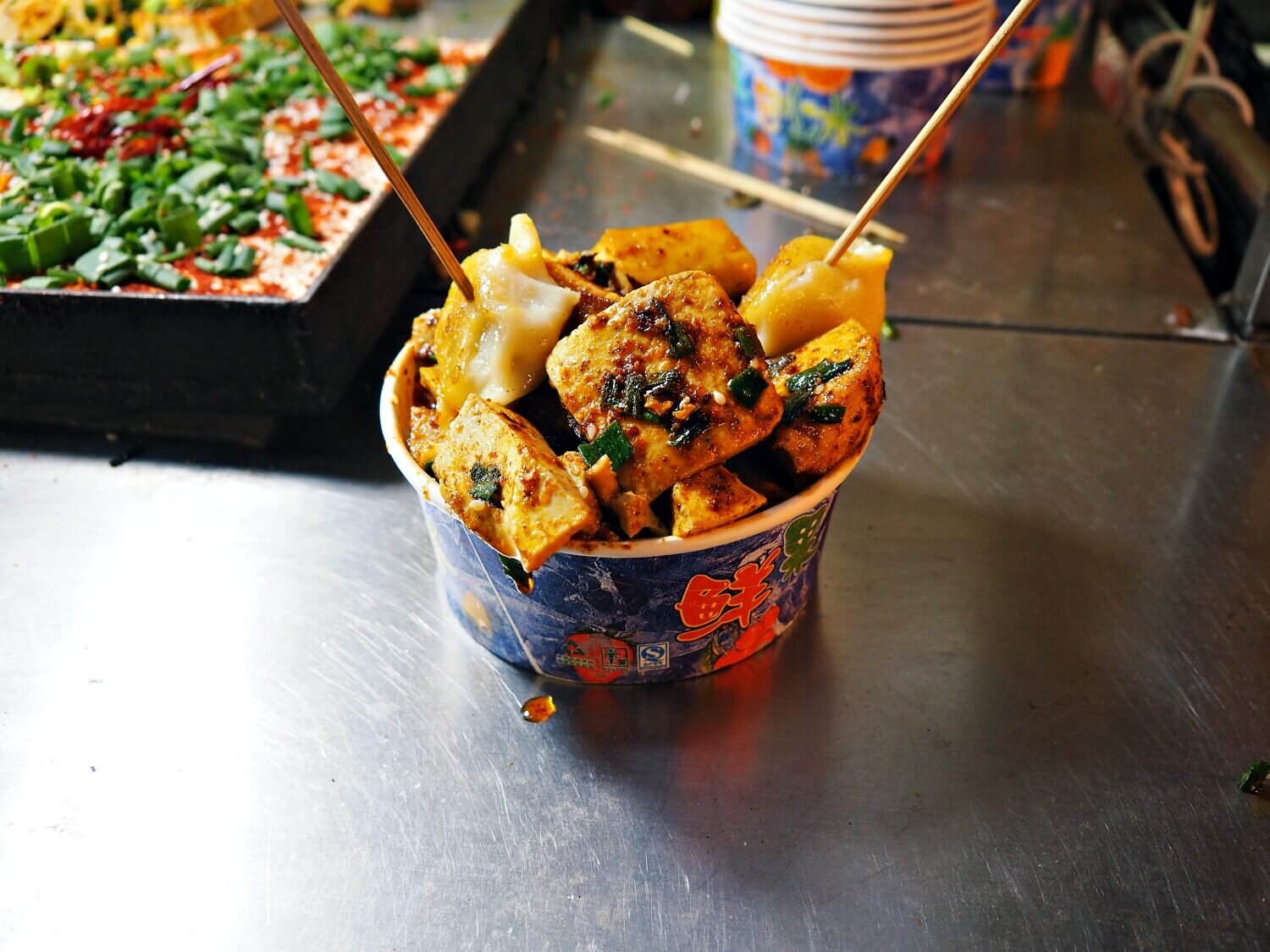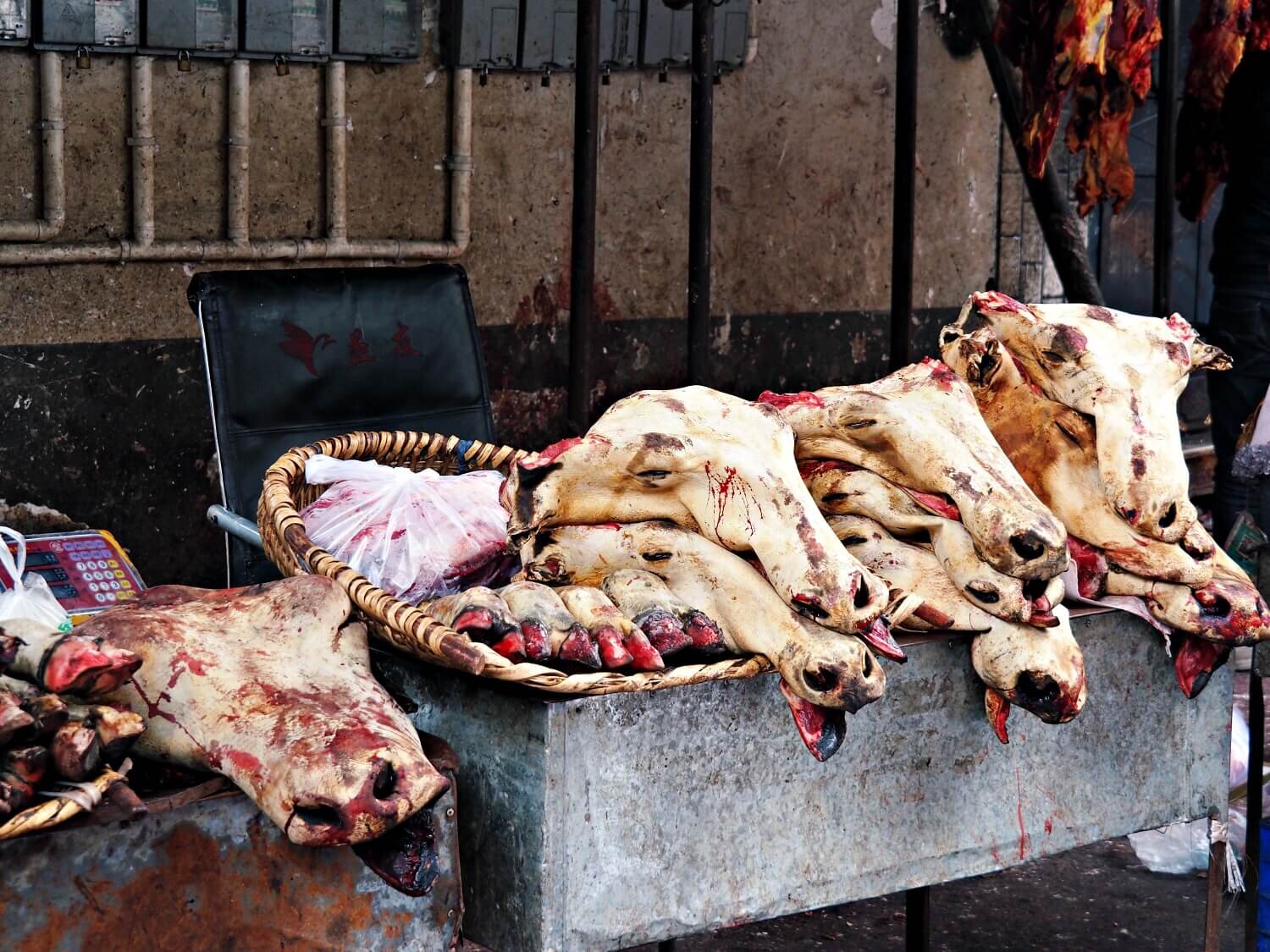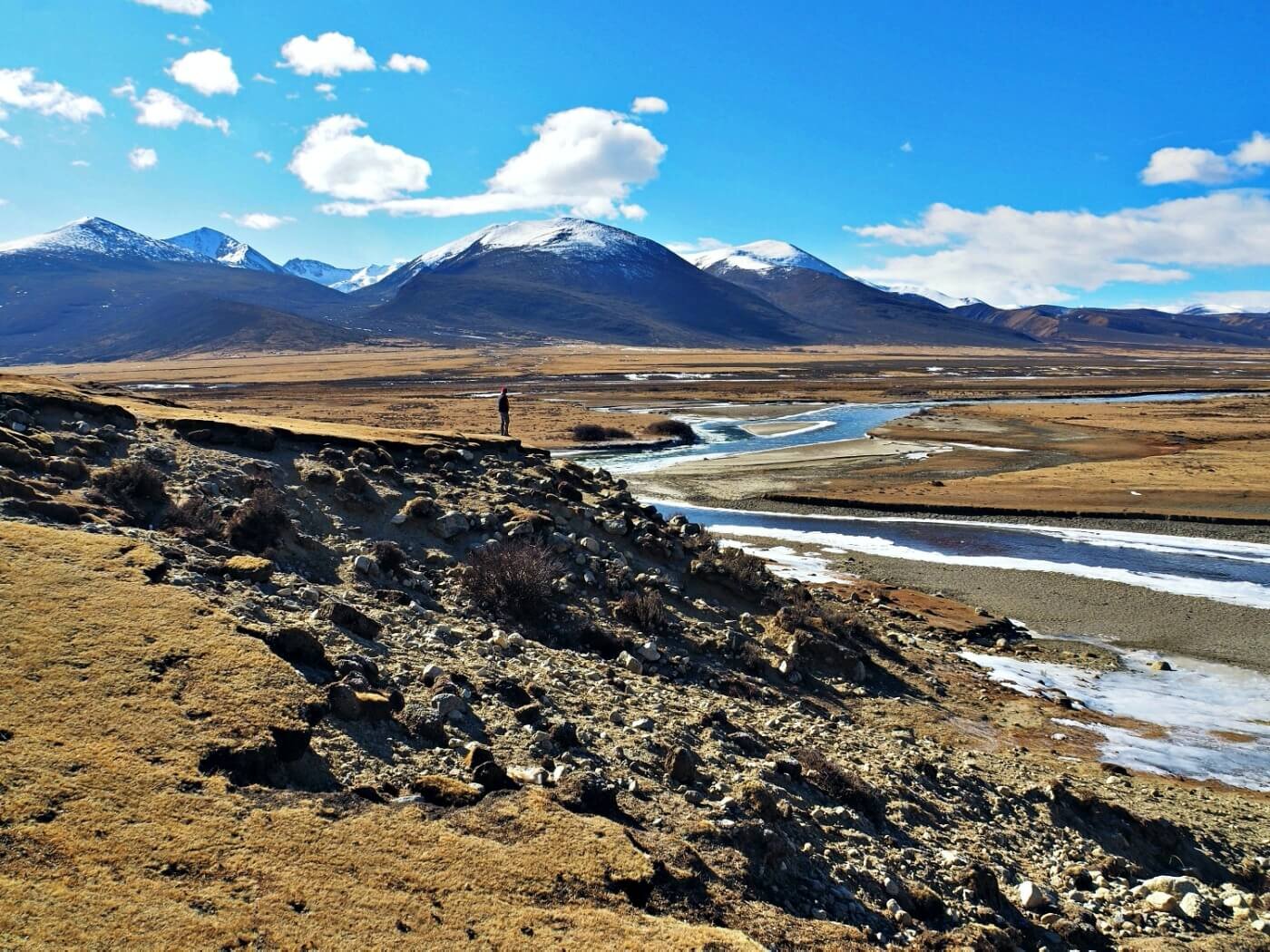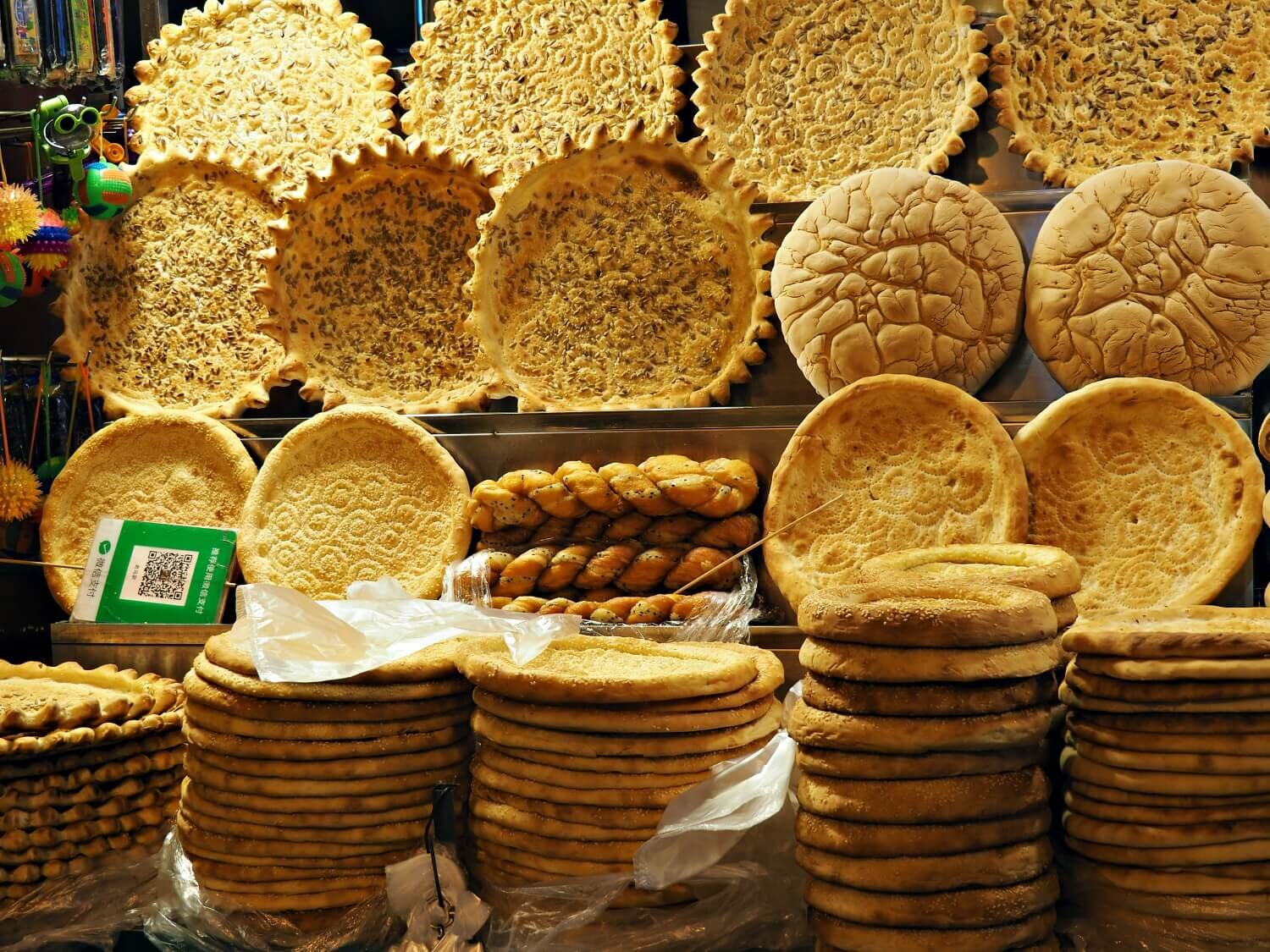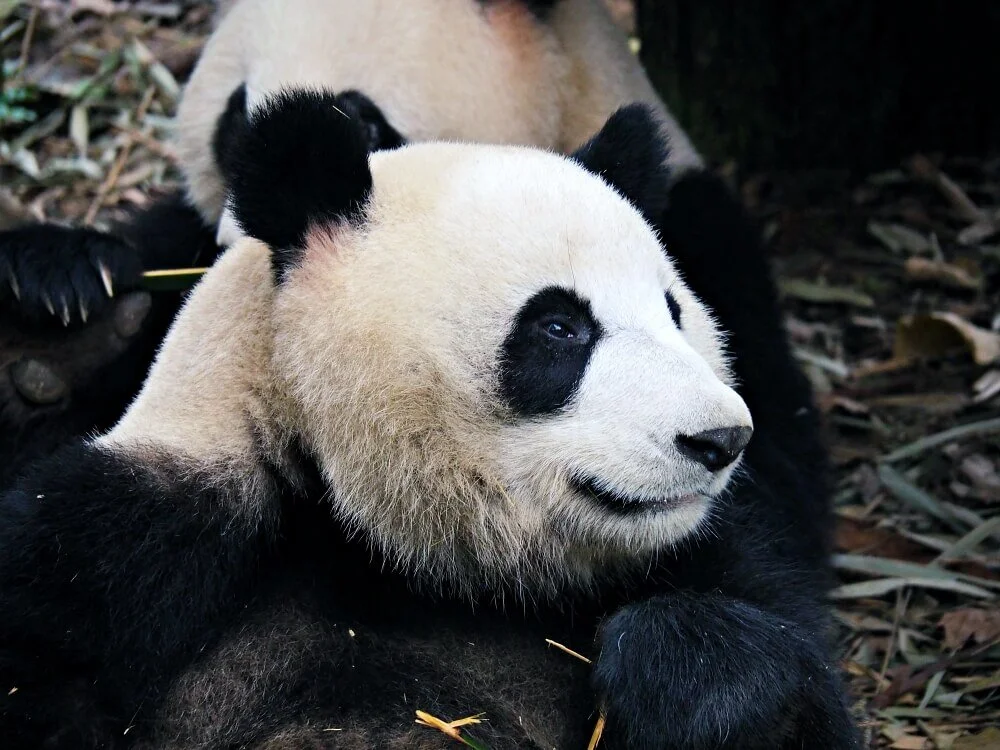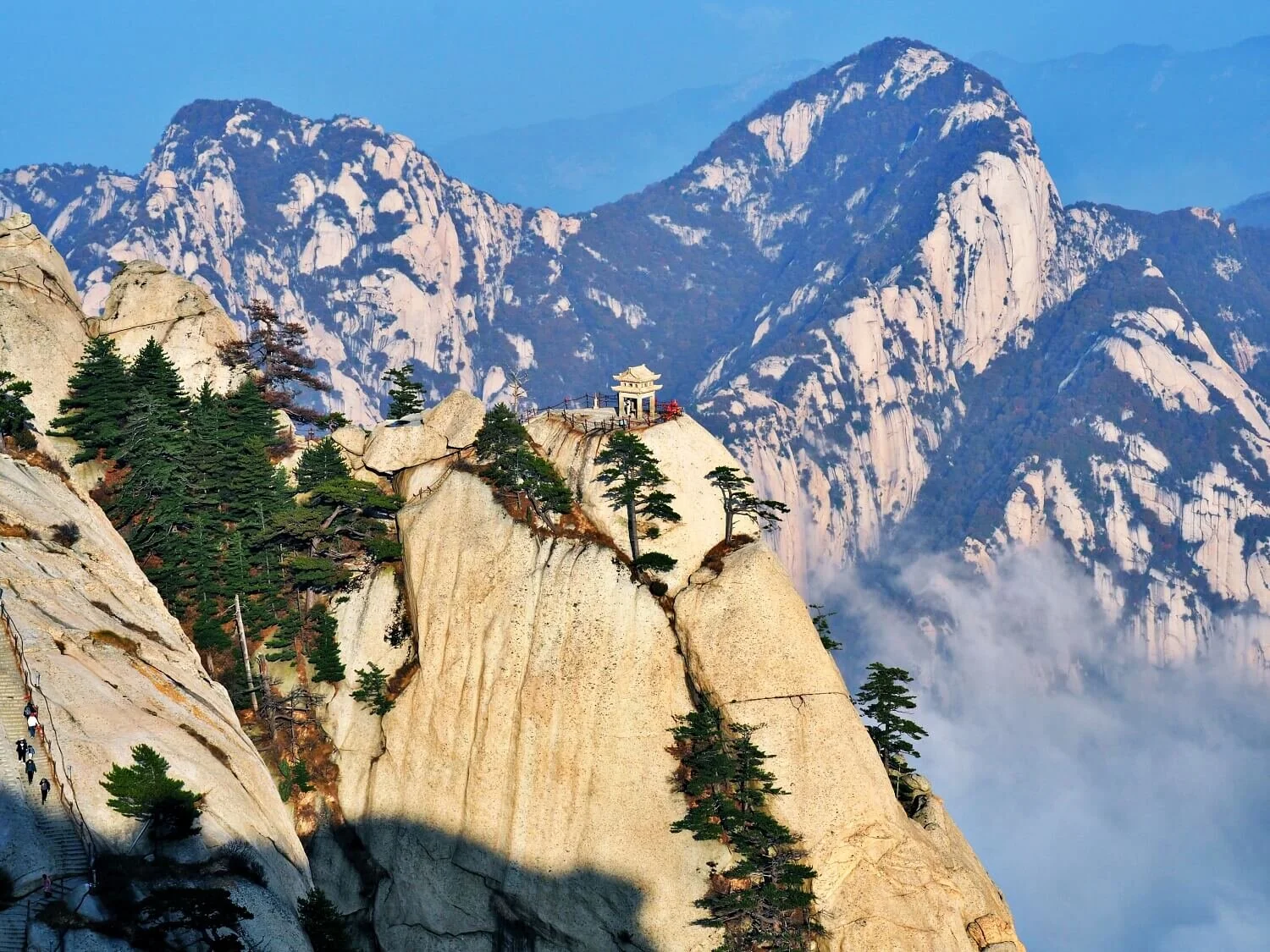Notes from the road: 22 lessons from two months in China
Our first impressions after two months travelling around the world’s most populous country.
We recently spent two months travelling in China, exploring as much of this vast country as we could in the time allowed (which considering the size of the country, isn’t that much time).
There is so much to say about this place - from the people and diverse cultures down to the awe-inspiring landscapes, all of which will undoubtedly be distilled into many lengthy and humorous blog posts (laugh damn you!).
However, for now, here are our top 22 takeaways from our mammoth 57-day trip in the Middle Kingdom.
1) Friendly peeps
People were super friendly. And not just out of curiosity either - generally, people smiled, wanted to have a chat, find out where we are from and also tried to help us if we looked lost and confused (which happened to us quite a lot).
The lady who wanted to cuddle me in a phone shop in Xi’an.
From the man who helped me literally put on my rucksack when I was getting off the train (and it wasn’t even his stop) to the woman who randomly cuddled me while I was buying a sim card, we found the people in China to be really lovely.
2) Get used to being stared at and becoming a minor celebrity
In a land where being one in a million means that there are a million people exactly like you, when you stand out, you really stand out.
I lost count of the number of people who asked for a selfie with me (I appeared to be a bit more exotic than Vincent) or a cuddle (see above - really not sure why this is) whilst others wanted to talk to me about my skin colour and eyes.
This guy asked for a photo together at the Le Shan Big Buddha.
These girls wanted a selfie at a hairdresser in Lhasa, Tibet.
I will admit that compliments like "your eyes are very beautiful" helped to pep me up when all the travelling made me feel dirty and knackered whilst "you are the same colour as this burnt stove" provoked much hilarity, especially for Vincent.
I wasn't as much of a fan of that one.
This lady wanted to pose for our photo with a photo that we had already taken of us together on her phone.
3) People are constantly worried about your body temperature
Being the hardcore cold-resistant Northerner that he is, Vincent often went out without a coat, even when the temperature outside dropped to single digits.
Single digit temperatures are common in certain areas in China during the winter, but despite the frigid temperatures, we think this is the best time to visit the country.
This provoked much consternation from local people in Lhasa, Songpan and Guilin with some actually approaching him and miming for him to put a coat on.
Sometimes one coat just wasn’t enough.
I, on the other hand, was rarely seen without my coat, gloves, scarf and hat.
4) The toilet situation was…tolerable
I'd heard horror stories of toilet cubicles with no doors (basically so you can say hi to people while doing a dump or opt to cover your modesty and face with an umbrella because who wants to see your poo face?); overflowing squat toilets filled with fetid odours and toilet walls caked in decades old faeces.
Basically, general rankness in the toilet arena.
However, while we came across a few of those toilets, I would say that the majority that we experienced were fairly clean and not horrendous.
Before I enter a toilet, Vincent, in his role as my “personal toilet inspector”, has to go in and assess the toilet first, giving a score of 1-10 (1 being terrible and 10 meaning you can have a cup of tea and a biscuit in there). Most toilets we went in were a solid 6.
Perhaps a 7.
A whiff of wee and some staining was common (if you are reading this blog with your breakfast then apologies, but you've already read the first paragraph which includes the word faeces), there is usually no toilet paper, no soap (you need to to bring those yourself) and no bum-gun either (I actually started to feel nostalgic about the wet toilets of Malaysia).
A precious commodity.
At tourist sites we've found shiny commode toilets that have even been perfumed with burning incense. This makes sense, given that President Xi promised a toilet revolution in 2015 and since then 68000 brand-spanking new toilets have been built, particularly at tourist attractions.
In the course of our toilet 'research' we've even discovered that altitude and cold weather can sometimes reduce the pong of a bad toilet, even if it is just a basic hole in the floor (unfortunately this ‘theory’ of Vincent’s didn't seem to apply to the toilets at Rongbuk Monastery at Everest base camp so maybe it is just about luck).
A door-less trough toilet stall set-up in Dali.
Further away from the towns, cities and tourist attractions however, the worse the toilet situation seems to get. And bizarrely, the more likely you are to have to pay to use these very basic and stinky facilities!
This is not the kind of place where you can just settle down with a book (if you are into doing that kind of thing on the toilet).
Men's toilets seem to be worse than women's (par for the course all around the world, I would say). We experienced the worst toilets during bus rides across the country and in Tibet: Vincent visited a few where there was a literal mountain of sh*t (leaving no space for you to do your own business) and where he had to walk past a man doing a poo because of stalls with low walls and no doors.
We were also both utterly confused by the toilets with two holes right next to each other (are you supposed to go in with a friend or something? Perhaps it was for families…). I was so worried that a stranger would come in and want to share the experience with me!
A basic toilet in Tibet - the quality of this photo is bad because of the panic associated with taking a photo on your phone in stinky surroundings and the paranoia that you might drop it on the floor or in the hole.
A lot of toilets also didn't have lighting, just to add that frisson of danger to the noxious and revolting conditions: what happens if you slip up and your foot goes in the hole?! (For the record this happened to me once in Sri Lanka. I was NOT a happy bunny). My solution was to leave the door wide open - at least I could see what was going on, even if some stranger saw my bum.
Tibet started a toilet revolution in 2017 and it is a work in progress - the toilets at Potala Palace are now very swanky.
5) But you will need to squat
While some places had commodes, most places we visited required us to be able to do a competent Asian squat.
Commodes (or 'pedestal toilets' as they seem to be known in China, which sounds a bit like a throne to me) are commonplace in hostels and hotels but our experience was that restaurants and public toilets were pretty much always squat toilets.
In train stations and airports there would sometimes be one commode but usually these would be occupied by someone watching movies or playing video games or something (I am not kidding).
6) Everyone wanted to give us free stuff
Not sure if this is because we look ‘pov’ or because I have eyes like the cat from Shrek but this happened A LOT.
From the woman in the Siguniangshan (Four Sisters Mountain) area who decided to give us free apples after we asked whether there were any restaurants nearby (we really hoped she didn't think we were begging!) to the biscuit seller in Lhasa who refused to take payment when we asked to buy two biscuits from her stall (possibly because most people we watched bought about 5kg of biscuits), people were just so giving.
And don't get me started on the old ladies in Songpan who insisted on repeatedly plying us with fried doughnut sticks and tea when we were just wandering past.
All the women working together to prepare food for the wedding party.
One of the ladies later told us they were preparing for her daughter's wedding party that day and then showed us all the dishes they were making. Generosity in the extreme.
7) Speaking of Lhasa, Tibet is incredible
Our eight day visit to the Tibet Autonomous Region was one of the most memorable trips we have ever done.
From the 40 hour train ride through snowy and mountainous landscapes to Lhasa, with its unique architecture, historical significance and friendly and kind people, Tibet was just A-M-A-Z-I-N-G.
On the train to Lhasa.
Our journey took us to monasteries, past glaciers and lakes that were so blue that we wouldn't have believed it was real, if we weren't seeing it with our own eyes.
Potala Palace in Lhasa, Tibet.
The beautiful Yamdrok Lake.
Gazing at the world's highest mountains and then finally seeing Everest in its huge ice-covered rocky glory, I actually had to pinch myself.
8) And Everest is f@%king massive
Yes I know, you don't have to actually visit Everest to realise that it is a huge mountain. But before we visited Everest base camp, we had some stupid questions like:
Would it actually look that big if you were standing closer to it?
Would it look much bigger than the other mountains beside it?
Well, (spoiler alert!) the answers are yes and yes. And at base camp, we stared up at the mighty mountain with one final question:
What on earth could possibly possess someone to climb this thing?
9) There is an entrance fee for absolutely EVERYTHING
If you want to see anything in China, be prepared to PAY for it.
Want to enter this monastery? That's 35RMB please. Interested in having a peek inside this temple? Cough up 70RMB. Well okay, let's forget about religious buildings then - nature is free and I love nature, so what about visiting this national park? Sorry suckers, that's 150RMB and an extra 50RMB if you want to take a shuttle bus and not walk 30km one way.
Beautiful, but the scenery of Huanglong is gonna cost you.
This seems beyond ridiculous - all the natural stuff existed already and now that you've built a fence around it and a fancy footpath, you want to charge people extortionate amounts to go and see it?
China reportedly makes around 9 billion RMB (over £973 million) a year from tourists visiting Jiuzhaigou national park alone and when you think that this is only one park in a place overflowing with parks and UNESCO heritage sites you can see that tourism generates some serious dollars for this country.
This beauty doesn’t come for free.
If you are a student you can get 50% off most entrance fees when you show your student card (or apparently anything that could vaguely pass for a student card, although I tried showing my driving license once and it didn't work). I just got a withering stare and then had to pay the full price.
Pensioners and kids can also get half price or free entry to some places. So basically it is best to be old or go back to school if you don't want to spend most of your precious travel money on entrance fees.
A typical sign outlining entrance fees.
Or go to Macau for a short trip. The hotels are expensive but on the plus side, most of the sights are free.
We ended up having to think really carefully about what we wanted to see and splurged on some sites we thought were worth it and then skipped others. And we rejoiced when we discovered cheaper sites that were £3 to get into vs £20. It’s all about the tiny wins.
10) Rice isn’t everywhere
Another stereotype debunked for us. When we thought of China we assumed (in our ignorance) that most Chinese dishes would be served with rice.
Upon arrival in Xi'an in Shanxi Province, we were very surprised to find that rice did not feature on any of the restaurant menus. Instead noodles of all shapes and sizes and dumplings were king. Nan breads stuffed with lamb and sometimes veges coated with sauces were also abundant.
Mmmm….
Stuffed nan bread action.
Vegetarian dumplings in Xi’an.
In Xi'an, biang biang noodles (thick, wide noodles with a similar density to cooked lasagne) were super popular. This hearty dish was often served with lots of chilli oil and for us, some green vegetables. Biang biang noodles were the perfect antidote to the increasingly frigid weather outside and we were surprised to learn that this dish was originally the humble repast of the poor rural folk.
In Chengdu, cold noodle dishes were everywhere, alongside spicy Sichuan hot pot.
The deliciousness that is biang biang noodles.
Bowls of cold noodles stacked up in a shop in Chengdu.
With me being brown (and Vincent being a brown person on the inside) we started missing rice and so we decided to do a bit of research on why our favourite grain was so hard to find.
All sorts of breads are common in the northern provinces of China.
It turns out that rice is a staple grain for southern China with its warmer, wetter climate but increasingly becomes a luxury the further north you go. In the colder and dryer temperatures of China's northern provinces, rice is harder to grow and hardier grains such as wheat, barley, millet and corn take its place.
In Tibet, rice is imported from southern China and sometimes from Nepal and India (which explained its presence in the yummy Nepalese thalis that I had whilst in the region) but the local population eat a lot of tsampa which is made from barley.
If ya’ll knew this already then I bow down to your superior knowledge.
11) Being a vegetarian in China was okay
As a vegetarian in Kuala Lumpur, I knew I was pretty spoiled but I didn’t know what to expect in China.
We both decided to stick to a vegetarian diet in China and in the end it wasn't as difficult as we initially thought it would be. (Before our trip, Vincent had visions of being reduced to eating bowls and bowls of plain rice, which would have also been hampered by the point above).
Armed with our Pleco dictionary app showing the word vegetarian: 素食者 or 'sùshízhě' and our Microsoft translator (because Google's one was completely useless) we were able to get vegetarian versions of local food made for us.
This meant that we were able to eat dumplings, wontons, noodle dishes and claypot rice to our heart’s content as well as vege versions of the nan breads I described above.
We were also able to find common vegetarian dishes such as stir-fried eggplant with lots of chilli, shredded fried potatoes, green beans cooked with chilli and stir-fried tiger skin peppers and potatoes in Chengdu, Xi'an and Guangxi.
Chilli tofu in the Muslim quarter in Xi’an.
A vegetarian version of dan dan noodles - a popular noodle dish in Sichuan province.
The humble aubergine saved us so many times over two months.
In Yunnan province, we were able to try the spicy and sour Dai cuisine which had a huge number of vegetarian options, including purple pineapple rice, stir-fried banana flower and ‘grandmother’s potatoes’ which was like a Chinese-style mashed potato dish. Serious, serious yums.
A small side note for the hardcore vegetarians and vegans out there: at no point did we ask about the oil that any of our food was cooked in or where it was cooked. To be honest, this was way beyond our language skills and we worried that we would end up just being hungry if we asked these questions.
Dai-style purple pineapple rice.
Another fried potato dish, cooked Dai style.
We also found that restaurants attached to temples served fantastic and very affordable vegetarian food, usually in a buffet style and so we also tried this out in a few different cities over the course of our trip.
Vegetarian food from a temple restaurant buffet.
Surprisingly, our visit to Macau to restart the second part of our visa, turned out to be the most disappointing for food: Macanese food was terrible for vegetarians. Everything that sounded tasty seemed to contain meat and the vegetarian versions were just bland and tasteless.
Given the Portuguese influence in Macau, we had visions of the Kristang food (Portuguese Malaysian food) we had greedily gorged on during a visit to Malacca - our bellies had been full of yummy devilled and coconut curries. However, we couldn't find anything even vaguely resembling this. There were a number of vegetarian and vegan restaurants but they all served Western food which wasn't what we had travelled to Macau or the rest of China for.
We got our hopes up about one place that said it served vegetarian dishes and ordered some vegetarian wontons and a dish called Buddha's Delight. The wontons were tasty but the main course was definitely not: grey vegetables (mainly lotus root and some slimy mushrooms) and some rice.
YUCKS.
For the record, vegetables should never be grey ‘yo. Presented with that, I don't think the Buddha would have been delighted at all.
12) The streets are like, REALLY clean
We were constantly amazed at how clean everything was. Apart from the odd chewing gum stain (this ain't Singapore) the streets were spotless.
I've no doubt that this was due to the army of workers that we saw outside railway stations and in the towns and cities whose job it is to sweep up everything from carelessly thrown cigarette butts to leaves. Someone is always sweeping something, somewhere.
And when there isn't a human doing the job, there is a singing truck spraying the roads with water.
13) But the pollution means the air isn’t
I wasn't expecting to wear my mask on my first day in China, but one taste (yes, you can taste it) of the smoky air in Xi'an and I knew that baby had to go on. I've experienced my fair share of haze in Malaysia and I would say that this was similar - I spent a lot of time looking at the skies and trying to work out what was fog and what wasn't.
Face mask chic.
Beijing was by far the worst - with trees, views and buildings obscured by a cement-grey smog. It was the only time I actually felt like I was being choked by the dirty air. To be fair, winter is probably the worst time to visit China in terms of air quality and you are likely to experience better air and lower levels of pollution during the spring and summer months.
It was hard to escape the pollution even at the Great Wall.
It isn't always obvious when the air quality is bad though: there were some days when the sky was blue and then I'd check the AQICN website to discover that pollution levels were still unhealthy. So I'd still wear a mask on most days.
The rural and mountainous areas had the best air: in the Tibetan regions we were treated to stunning blue skies every day. But as Vincent pointed out, we were either struggling to breathe because of the pollution or because of the high altitude.
14) You will need to get used to spitting and a different approach to hygiene
I was told to expect lots of coughing and spitting and damn, were people right. People spit everywhere: on the streets, in restaurants, inside airports, on the plane, in the supermarket, on buses...There were actually announcements on some buses asking people not to spit.
And sure, we found it gross. That sound, when someone sounds like they are raking up the phlegm all the way from their toes, just to make sure nothing is left: "HAAAARRRRKKKKHHHHHHHH!" turned our stomachs every single time. And it was almost impossible to escape it. Even a waitress serving us in a restaurant kept making the noise (albeit quieter than usual) while she was taking our order.
On some days, it was just too much.
Having said that, I also know that these are my Western sensibilities talking. Chinese people find it pretty disgusting that we sneeze and cough into tissues which we then squirrel away into our pockets for...what? To use again next time? For safekeeping because we really like to hang on to our bodily fluids? (I've actually always thought that handkerchiefs are totally rank). When you think about this, what we do isn't exactly the height of hygiene either.
Not entirely convinced that putting this in your pocket is better.
In China, it is better to get all this nastiness out instead of saving it in a soggy tissue. And so no one bats an eyelid to all the hawking, phlegm gurgling and spitting that goes on. Blowing your nose outside and just flinging it away is also fine.
Spitting, however, isn’t unique to China: some people argue that historically Britain is a nation of spitters and the consumption of betel nut in places like Myanmar, Sri Lanka and India also results in a lot of public spitting.
More people coughed and sneezed in my face throughout this trip than I have ever experienced in my entire life. (This wasn't something that I actually wanted to experience by the way.)
Getting coughed or sneezed on doesn’t make me feel good. (Don’t even ask what is going on in this photo).
I only got ill once over the two months (Vincent didn't get sick at all) and we were honestly both surprised that this didn't happen more often. Thank you immune systems!
There were moments, however, when even we had to draw the line somewhere. On a domestic flight between Chengdu and Zhuhai, Vincent and I were seated separately. Rice porridge was served for breakfast and as Vincent didn't want his, he gave it to the man seated next to him.
Image credit: China Sichuan Food
His seat companion proceeded to eat half of it and then blew his nose into the remainder when he had finished. The air steward came running over with a tissue but it was fair to say that it was too late.
Vincent, who has never been a fan of rice porridge, is probably never going to eat it again.
15) The food was spicy
The food we had in China was nothing remotely like the UK version of 'Chinese' food (and can we all just say 'hallelujah' to that).
I knew this would be the case already (you can't tell me that a nation of 1.4 billion people, in a country that covers 9.6 million square kilometres all eat the same thing e.g. sweet and sour pork and chicken chow mein?!). The reality is that the food in China varies from province to province and in some cases even city to city and really, there is no such thing as general 'Chinese food'.
What surprised me most though, was the liberal use of chilli. While I knew Sichuan province was famous for its spicy food, I didn't expect to see the ubiquitous use of chilli in other places.
And with my Sri Lankan heritage, I love eye-wateringly hot food.
Spicy Sichuan hot pot.
Perhaps it was the regions we visited during our trip (we primarily stuck to the Western and Northern provinces) but there seemed to be chilli in everything we ate. And I am not just talking about the odd chilli here and there. I am talking about lots and lots of them.
Would you like some potatoes with your chillies?
From the vegetarian dumplings liberally drizzled in chilli oil and the spicy squares of tofu that we guzzled down in Xi'an, the potato and aubergine dishes that seemed to be heaped with about ten dried chillies in Kunming to the lip numbing hotpots in Chengdu, there was chilli a-plenty in everything.
Chilli tofu yummyness.
Not that we were complaining. We love our spicy food!
16) And there are some weird flavoured snacks
For some reason it seems to be a popular trend for certain things to be flavoured like other things. And I am not talking about prawn cocktail flavoured crisps (though why on earth these were invented, I don't know). I am talking about pecan flavoured sunflower seeds. Cattle juice flavoured bread beans. Seaweed flavour almonds. What's wrong with the original flavour of all these things?
17) People have what some might call a ‘varied’ diet
Given all the racist media hysteria about the coronavirus and misleading videos about bat soup, I am going to try and be sensitive in what I say here whilst also being honest about what we saw being eaten during our two months in China.
In a country that has experienced horrendous famines, people quickly learnt that when it comes to eating, they can't really afford to be choosy. As a result, it seemed to us that restaurants and street stalls served everything and anything.
Insects of all sizes and shapes, with wings and without, were fried to a crisp and displayed in baskets at markets alongside sliced and gutted monitor lizards and snakes; dogs seemed to be on the menu in some towns with dog meat hotpot being a particularly famous dish in Guangxi province; we saw snail soup and duck's blood pancake and all sorts of offal too, such as animal intestines, hooves and feet, lungs and tripe.
The consumption of meat that we consider to be more ‘exotic’, however, isn’t exclusive to China and interestingly, the way that we define what is exotic or unappetizing is highly subjective.
In the UK for example, some of us like nothing better than to chop up an eel, boil it in stock and then leave the whole lot to metamorphosise into a jelly-like mess. Sometimes we will pair this absolute abomination with pie and mash (a great way to ruin those two things if you ask me).
Honestly, I feel that eels should be left alone and not go anywhere near jelly.
Or consider ‘brawn’ (sometimes also referred to as ‘head cheese’) which basically consists of all the bits of meat that can be dug out of, you’ve guessed it, a pig’s head! It’s usually mixed with pig trotters which helps the whole thing set into a sort of nightmarish terrine.
Finally, everyone who loves a good old English fry up often seem to accept the inclusion of black pudding in their Sunday morning grease-filled hangover cure. Black pudding is basically congealed pigs blood, lard and oatmeal, stuffed into a length of intestine that is then sliced and fried. Ooooh, yums.
And don’t even get me started on tripe - though apparently this is now classified as an ‘endangered’ British food because far fewer people are eating it (though why this is a surprise to anyone, I don’t know).
A gorgeous English breakfast totally ruined by the inclusion of black pudding.
From Malaysian torpedo soup (made from bulls’ penis) to Sri Lankan testicle curry, every country and culture has its own version of ‘exotic’ food that is appealing to some and unappealing to others.
The difference I suppose is how our cultural sensibilities affect how harshly we judge people from a particular country about what they eat (e.g. dogs being killed for their meat is not acceptable to Westerners, whereas cows are sacred animals to Hindus and the slaughter of a cow carries the penalty of life imprisonment in Gujarat).
We noticed that every single part of a yak was sold at the butchers in Songpan.
Foods that are the thing to try on an adventurous off-beat travel programme also suddenly become a weapon to slam people with when something like a disease outbreak happens.
As a person that eats a mostly vegetarian diet, I didn’t end up trying any of the ‘exotic’ food stuffs I saw at Chinese markets or restaurants.
One thing I will say is that at many of the markets we visited it appeared to us that every possible part of each animal was consumed and we honestly found this kind of ‘nose to tail’ eating quite refreshing. Nothing seemed to be wasted. And for us, that can only be a good thing.
18) Areas of amazing natural beauty
Snowcapped mountains. Azure coloured lakes. Travertine waterfalls. Stunning plains. Thundering rivers. Cavernous gorges. Otherworldy karst formations. Painstakingly carved rice terraces.
Basically, China has it all.
And we didn’t even visit the coast - which we are told has some stunning beaches. So something to come back for!
One thing’s for sure: there’s a whole lot of natural beauty in China.
19) Cash ain’t king
"It's not about the money, money, money,
We don't need your money, money, money..."
Well okay, you might have guessed it is not exactly this. I've already told you that nothing comes for free in China. Everyone wants you to pay, it's just that they don't necessarily want your cash. Instead everything is paid for by QR code.
Need bread? With a wave of your phone it’s yours.
A cashless society is already the reality in many parts of China. Using Alipay and WeChat Pay, most people never have to touch cash again: from public transport to fruit stalls, you'll just see people holding up their phones to scan a QR code in order to pay.
This dried fruit and nuts stall takes both WeChat and AliPay.
Some places that we visited looked completely baffled when I asked to pay in cash as though they weren't sure what to do with it. Annoyingly WeChat Pay (the widest used mobile payment app) isn't currently available for foreigners, despite plenty of blogs and ads saying that it is.
Whilst I was able to add a UK credit card to the app (which sadly got me all excited thinking I would be able to scan, pay and go) I wasn't then able to use the QR Code Pay or Quick Pay functions on the app without having a mainland Chinese bank account. BOOOOOOOO. Apparently Alipay works better for foreign cards but by the time I thought about trying this, it was already the end of our trip. (Do let us know if you’ve tried it!)
We were luckily able to pay with cash most of the time (we used apps linked to our credit cards to pay for train tickets and taxis). It was also pretty easy to find an ATM that accepted foreign credit/debit cards: Bank of China, China Merchant’s Bank and ICBC accept Visa and Mastercard.
Most street food stalls accept mobile payments.
One thing to consider when using these apps is that by giving your card details, address etc. you are essentially sharing all your details with the app and hence with the Chinese government so they can track you wherever you go.
Having said that, with the amount of surveillance in China and the fact that you need your passport details every time you book a flight, long-distance bus or train, they probably know where you are anyway. But if you don't want them knowing about your obsession with cattle juice flavoured broadbeans, it's probably best if you stick to just using cash.
20) You are most definitely being watched
Was Rockwell talking about surveillance in his paranoid pop classic? (Image credit to Discogs)
“I always feel like somebody’s watching me,
And I have no privacy,
I always feel like somebody’s watching me,
Tell me, is it just a dream?”
Sorry to say Rockwell, but when it comes to China-style surveillance, it most definitely isn’t a dream.
In the UK we aren’t really strangers to the idea of mass surveillance - according to a recent survey by Comparitech, London is apparently the most surveilled city in Europe, with around 630,000 cameras watching 9.6 million Londoners every day. That’s 68.4 cameras per 1000 people, if you’re wondering. Berlin, which comes second place in the survey, has only 11.2 cameras per 1000 people.
But still, China’s surveillance machine is seriously next level. There are cameras literally everywhere, hovering over high streets, swivelling around shopping centres, down narrow alleyways and even strategically placed amongst the trees and around lakes of natural scenic areas, ensuring that they catch your every move.
By 2018, the government had apparently installed close to 200 million of these surveillance cameras across the country which is around one camera per 7 people. And they are now also widely employing facial recognition technology to make identification even easier.
Meanwhile, there is the pain in the ass that is the Great Firewall. Do not enter China without a working VPN because you will just want to cry with frustration.
Our VPN didn’t work properly during our first few days in China and we were reduced to having to look things up on...Bing (remember Microsoft’s search engine?!), which was NEVER useful. I actually started to wonder how I ever lived without Google, which is probably an issue in itself.
All internet activity is monitored in China and even with a VPN, we were fairly cautious about what we searched for. Google, Facebook, Instagram, Whatsapp, Messenger and Line are all blocked in China, so you will need a VPN to be able to use any of these.
Trying my best to fix our VPN.
It is useful to have WeChat on your phone (we needed it to message hostels and when we met people we made friends with) but be aware that this is under strict surveillance and all conversations are stored for at least 6 months.
We both also got a Chinese SIM card during our trip, just to make communication easier. The process was long and drawn out and required our passport and visa details. The SIM cards also made our phones go a bit funny - they slowed down and also kept randomly opening the camera app when we were using them. Paranoid much?
Certain areas of China have even stricter security and surveillance measures. We saw this in force particularly in the Tibetan Autonomous Region where there were security checkpoints and identification stations everywhere.
People had to show their ID cards, answer some questions and look into a camera as well as have their bags scanned before walking through an airport-style metal detector. As tourists, we were often just waved through, which made the whole thing even more uncomfortable, weird and sad - imagine having to do this every day when you are just going shopping or to pray at the temple?
Public transport in China is also heavily surveilled - every bus, metro and train station has at least a metal detector and bag scanner, with some people also doing body searches.
Train stations actually have airport levels of security, which makes the whole business of catching a train unbelievably stressful. If you are ever taking a train in China, leave plenty of time for the security checks.
People waiting outside the security checkpoint at Xi’an train station.
If all of that doesn’t make you feel paranoid, then perhaps people actually telling you that you are being watched might. Several times during our trip (particularly in Tibetan areas) we were told to watch out for ‘spies’. One man in a teashop told us, “You think that they haven’t noticed you are here, but they have. They are always watching and following you”, before warning us not to discuss any politically charged topics while we were there.
And there I was, thinking I’d just come in for a relaxing brew.
When visiting Tibetan regions (particularly the Tibetan Autonomous Region) or Xinjiang province, local people may engage you in political discussion. Whilst we asked questions, we were still very careful to make sure anything we said wasn’t too controversial. We had to be mindful of the fact that while we might not get in trouble for our opinions, they certainly could.
Also keep in mind that it is against the law to take photos of security checkpoints, security cameras, police officers or soldiers in the Tibetan Autonomous Region - the penalties can be severe for your guide and tour company. This is generally good advice that applies to anywhere in China.
During the first day of our tour in the Tibetan Autonomous Region, I noticed that there was a camera that was filming us all the time while we were inside the car. A little perturbed, I asked our guide about this and he said, “Yes this camera, sees and hears. It is for our safety.” Eeeeek.
21) Public transport in China is fricking amazing
I am actually wrote this section while sitting on a National Express bus to London.
In the good old days when I was a bit more dripping in cash monies, I would always take the train, but given that: a) a ticket would have set me back £44 for a two-hour journey unless I booked three weeks in advance, when it would have cost £25 (real bargain!); b) the trains still feature those corner toilets where if you neglect to lock the door, a stranger can press a button on the outside and basically expose you doing your business; c) said toilets often smell of wee and the food available is crappy, I decided that paying £9.30 for a journey on the National Express was worth it.
But in China, we didn't experience these public transport woes. We travelled from province to province by bus and train, which when considering the distances between places, turned out to be amazingly good value for money.
Inside a typical high speed train in China.
For example, we travelled from Guangzhou South to Guilin North station (a distance of 505km) by bullet train for a cost of just £17.99 each. The trains are spacious with plenty of room for your luggage either above you or in front of your seat. Booking was also easy - I booked the tickets online the day before and collected them about half an hour before the train left.
Train stations in China can be pretty huge - this makes sense when you consider how many people use the rail network.
When a city we were visiting had a metro system, we made sure we used it. In Chengdu, Xi’an and Kunming we rode that baby all day, hopping on and off and paying between 2-8yuan (20-80p) to criss-cross between different areas and attractions.
Most subway systems have the stops marked in English, but if you use the MetroMan app you will never be lost: it works out your routes and even tells you when the next train is due! We were able to buy our train tickets from the machines in most cities as they had an English language option (apart from in Xi’an where we had to go to the counter).
A pretty sleeper train.
In our experience, most Chinese towns and cities also have an amazing public bus network: however, it was hard for us to work out where different routes were going as the timetables were almost universally in Mandarin.
When a host or hostel told us which bus route to use, we found the system to be clean, fast, efficient and super cheap: most journeys only cost us 2 yuan.
22) Be prepared to do some serious walking
Many people say that China isn’t the place for inexperienced travellers, given the language barrier, cultural differences and crowds. We would say that it isn’t the place for a lazy traveller either. This is a place where we ate and drank to our heart’s content, but by the end of the trip, we’d actually lost weight.
This is perhaps because we actually walked more in China than on any of our other trips. Most cities (bar perhaps Beijing due to its size) are designed for walking with wide pavements in decent condition and given that it was winter, it was nice to be active and keep off the chill.
Tourist attractions also tend to be on a grand scale and some can take several hours to walk around.
There’s a lot of walking involved to get to the chess pavilion on Mount Huashan.
We also found ourselves doing a lot of hiking in China, including trips to Mount Huashan, walks around the Four Sisters Mountains and a 3-day trek in the Tiger Leaping Gorge. Even the Great Wall required a lot of walking, what with its endless stairs!
The steep stairway or ‘Dragon’s Back’ of Mount Huashan.
On that point, China seems to have a real love affair with stairs - you can’t escape them. Whether it is at train stations, temples or up mountains, these quadricep killing things are everywhere. Sure, on some mountains you do have the option of taking a cable car but that will hit you in the wallet. Better to get your ass moving instead!
And that’s a wrap!
We absolutely loved our time in China and after two months in the country we were left with a whole host of unforgettable memories, that ranged from the awe-inspiring to the hilarious.
It now ranks as one of the best trips we have ever done and yet we have still only seen a small portion of this incredible country.
Hopefully one day we will be back.
Have you been to China? What would you add to this list? Let us know in the comments below!
Looking for more travel inspiration? Click here to discover more of our favourite places around the world.
If you liked this blog post, Pin it!








